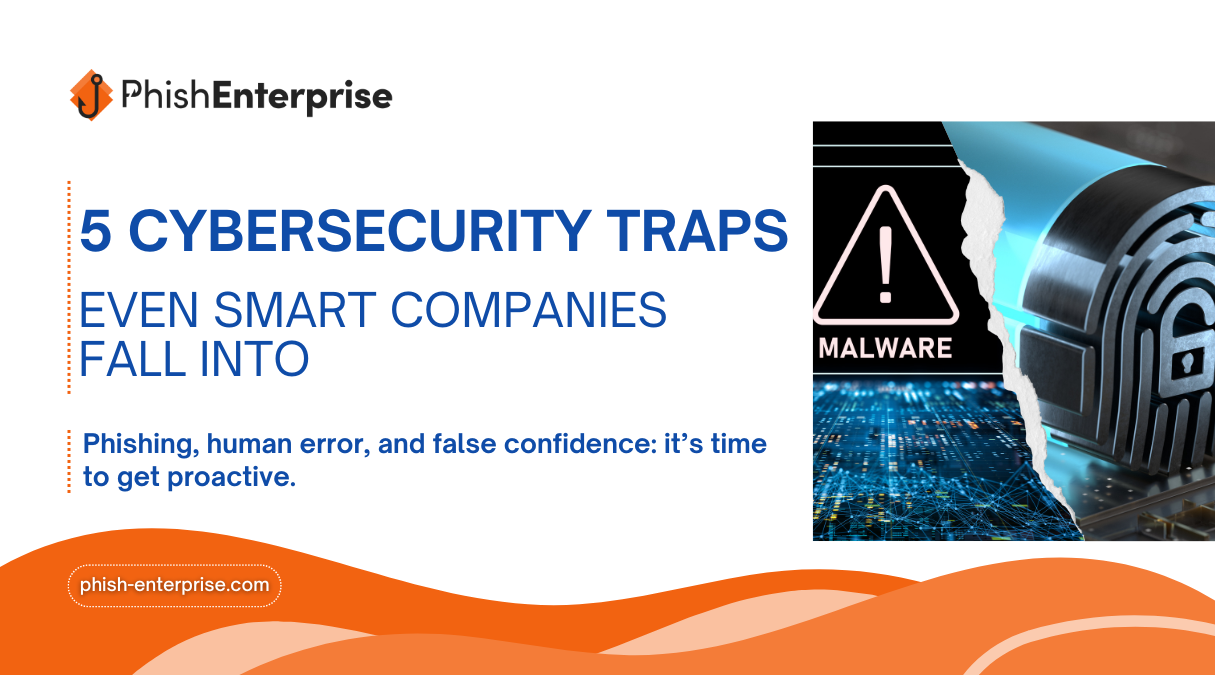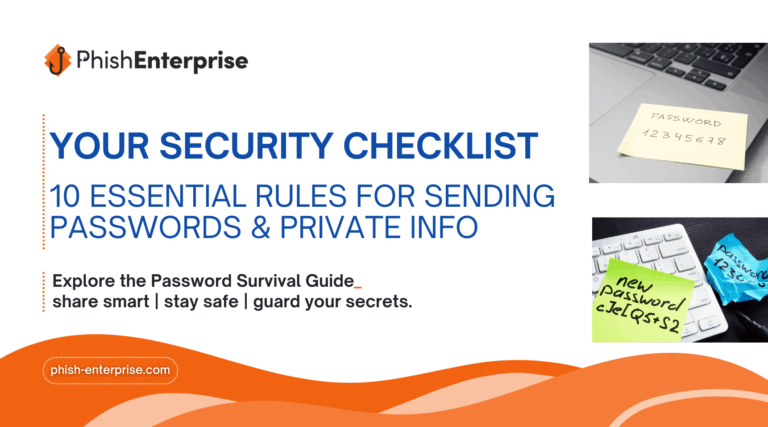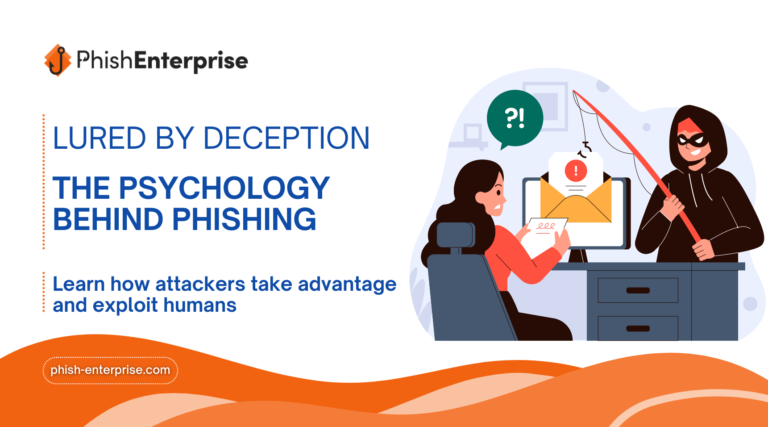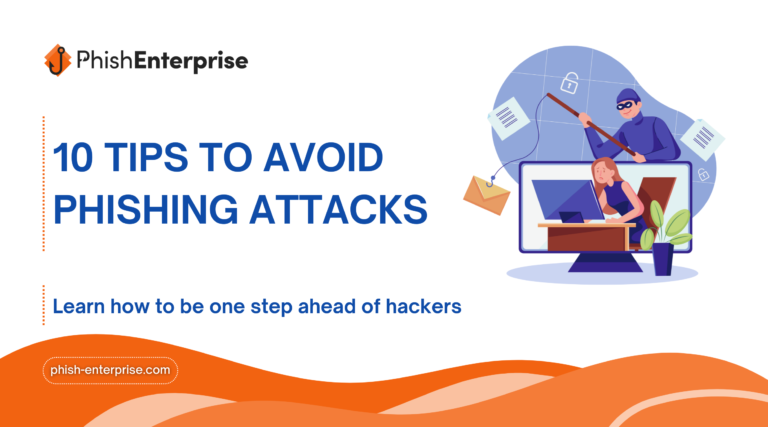Avoid these 5 costly cybersecurity mistakes in 2025
Cyberattacks in 2025 are faster, smarter, and more targeted than ever. If your defenses haven’t kept pace (or better yet, stayed ahead), your business is already at risk.
Even the most well-funded, tech-savvy companies are making costly cybersecurity mistakes, often without realizing it – until it’s too late. From overlooked phishing threats to overreliance on tools, these missteps can lead to data breaches, downtime, and reputational damage that cost millions.
In this post, we’ll break down the top five security blind spots companies still struggle with, and how a smarter, more proactive approach can protect your people, your data, and your bottom line.
1. Relying on traditional (and outdated) training methods
- Phishing continues to dominate threat vectors in 2025 – with over 3.4 billion phishing emails sent daily, and AI‑driven phishing surging more than 4,000% since 2022.
- Traditional phishing training often relies on static presentations or annual video modules that quickly become outdated. These methods fail to adapt to evolving tactics, leaving employees unprepared for today’s fast-changing threat landscape.
- Research from Ponemon and Verizon shows that companies with structured awareness training experience up to 70% fewer successful phishing attacks, while 68% of breaches involve the human element.
💡 How to fix it: Switch to ongoing, realistic phishing simulations. Phish Enterprise keeps training fresh and dynamic, tailored to the latest tactics.
2. Assuming IT alone can protect the business
- The IBM Cost of a Data Breach Report reveals that up to 95% of breaches are caused by human error.
- The average breach now costs $4.88 million in 2024 – a 10 % increase over the previous year.
- IT teams are often stretched thin, juggling infrastructure, compliance, and incident response, leaving little time for proactive user training. Relying solely on them to defend against phishing puts unrealistic pressure on their role and overlooks the organization’s shared responsibility for cybersecurity.
- Moreover, no tool – no matter how advanced or expensive – can replace the need for well-trained, alert employees. Even the most sophisticated security systems can be bypassed by a single careless click on a phishing email.
💡 How to address it: Cultivate a security-first culture – shared responsibility, frequent phishing tests, and executive involvement are key to closing human‑layer gaps.
3. Skipping recurrent phishing simulations because “We trust our team”
- Phishing attacks targeting European organizations surged 112% between April 2023 and April 2024 – showing how fast new threats are growing across the continent.
- Many companies skip regular phishing simulations under the assumption that their team “knows better” or can recognize obvious threats.
- Despite confidence, 60% of recipients fall victim to generative AI‑driven phishing attacks, and roughly 80% of phishing campaigns are AI‑generated.
- A single undetected phishing email can lead to credential theft, ransomware infection, or financial fraud – costly incidents that could have been prevented through regular testing and preparedness.
💡 The smarter approach: Embed non-punitive, educational simulations via Phish Enterprise – empowering, not embarrassing employees.
4. No clear incident response plan
- Companies that resolved breaches in under 200 days spent an average of $3.93 million, compared to $4.95 million for longer resolution times – demonstrating a 23% saving.
- The typical data breach lifecycle in 2023 spanned 277 days, with 204 days to identify and 73 days to contain.
💡 Recommended action: Build your incident response playbook now – and test it regularly through simulations to shorten detection and containment times.
5. Treating compliance as the goal, not just the starting point
- Meeting cybersecurity compliance standards is important, but it’s just the beginning. Regulations ensure a minimum level of protection, not true readiness for modern, fast-evolving threats.
- Data breaches now include 46% involving customer PII (personally identifiable information such as names, SSNs, addresses) – and 74% involve humans.
- According to IBM report shadow data is present in 1 in 3 breaches, and organizations using AI and automation in security save an average of $2.22 million compared to peers.
💡 Mitigation strategy: Go beyond audits – leverage real-time behavioural metrics and resilience scoring. Phish Enterprise offers dashboards measuring phishing click rates, risk scores, and training outcomes – providing actionable insight over mere compliance.
Final thought: Overconfidence is a silent threat
In 2025, overconfidence in your cybersecurity defenses is a liability. As phishing tactics become more advanced and breach costs continue to rise, companies that assume “it won’t happen to us” are often the first to fall victim.
The real damage of a cyberattack isn’t just technical – it’s financial, reputational, and operational. Downtime, data loss, legal fallout, and broken customer trust can cost your business far more than prevention ever will.
Being proactive is smart and a long term investment.
With Phish Enterprise, you can:
- Build real-world phishing resilience across your workforce
- Lower the risk of breach-related costs
- Safeguard customer trust and protect your brand
- Go beyond compliance and create a truly secure culture
Don’t wait for a breach to realize you’re exposed.
👉Let’s future-proof your team with proactive, proven cybersecurity training – act now before attackers do!



